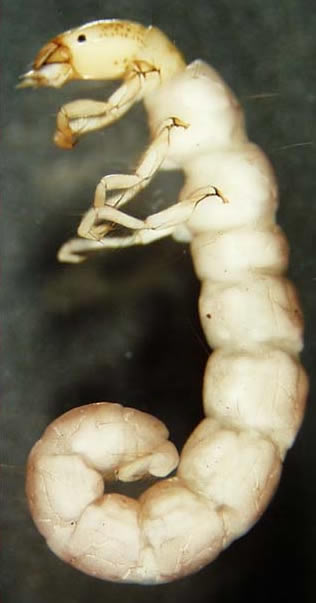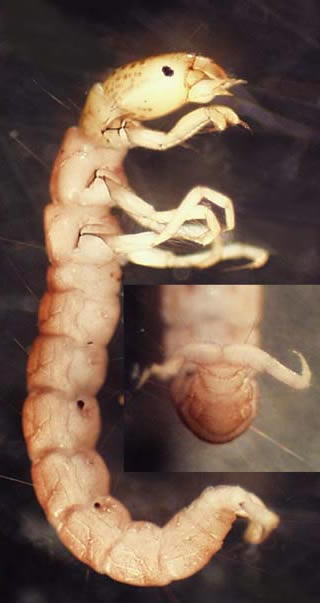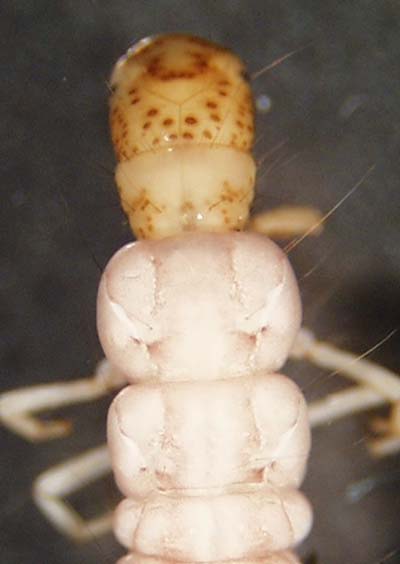
THE XERCES SOCIETY FOR INVERTEBRATE CONSERVATION Aquatic Invertebrates in Pacific Northwest Freshwater Wetlands |
| Identify taxa |
Polycentropodidae (tube making caddisflies) |
|
The Polycentropodidae are among the few fixed retreat-making or freeliving caddisflies that can live in still waters. They have been collected in wetlands in the Pacific Northwest. Many of the retreats built by members of this family are simple tubes with an equal-sized opening at each end, but some caddisflies in the genera Polycentropus and Neureclipsis build large trumpet-shaped nets from one end of their tube. Like the portable case-making caddisflies, the tube-makers can undulate their body, and some have hairs along the sides of their abdomen to help facilitate water movement through their retreats.The species that build such fragile cases must live in slower currents, but use the fine silken strands to detect the vibration of drifting prey. All the members of this family are effective predators, eating zooplankton and other small organisms. Polycentropodidae larvae are similar to Psychomyiidae because the second and third thoracic segments and the ninth abdominal segment do not have any plates on top. They also have a prominent, sharply pointed trochantin on the front leg. They do not have a fleshy, white, T-shaped labrum at the front of their head. In Pacific Northwest wetlands, one is likely to find caddisflies in the genera Nyctiophylax and Polycentropus. Nyctiophylax larvae look very similar to Polycentropus, but they usually lack prominent dark spots on their head and have several short teeth on the underside of the anal claws. Both segments of anal proleg are hairy, and the fleshy segment (closest to the body) is longer than the second, sclerotized segment. Nyctiophylax make retreats over a slight depression in a rock or piece of wood. They build a silk ceiling and lay a bed of silk on the substrate below the ceiling. The silk on the substrate also continues out beyond the ceiling at both ends. Polycentropus make two types of retreats: one is a flimsy tube on a bed of silk strands that can be used to sense prey; the other is similar to a funnel. |
Size: medium to large |
|
© 2007 Xerces Society
Contact info@xerces.org





